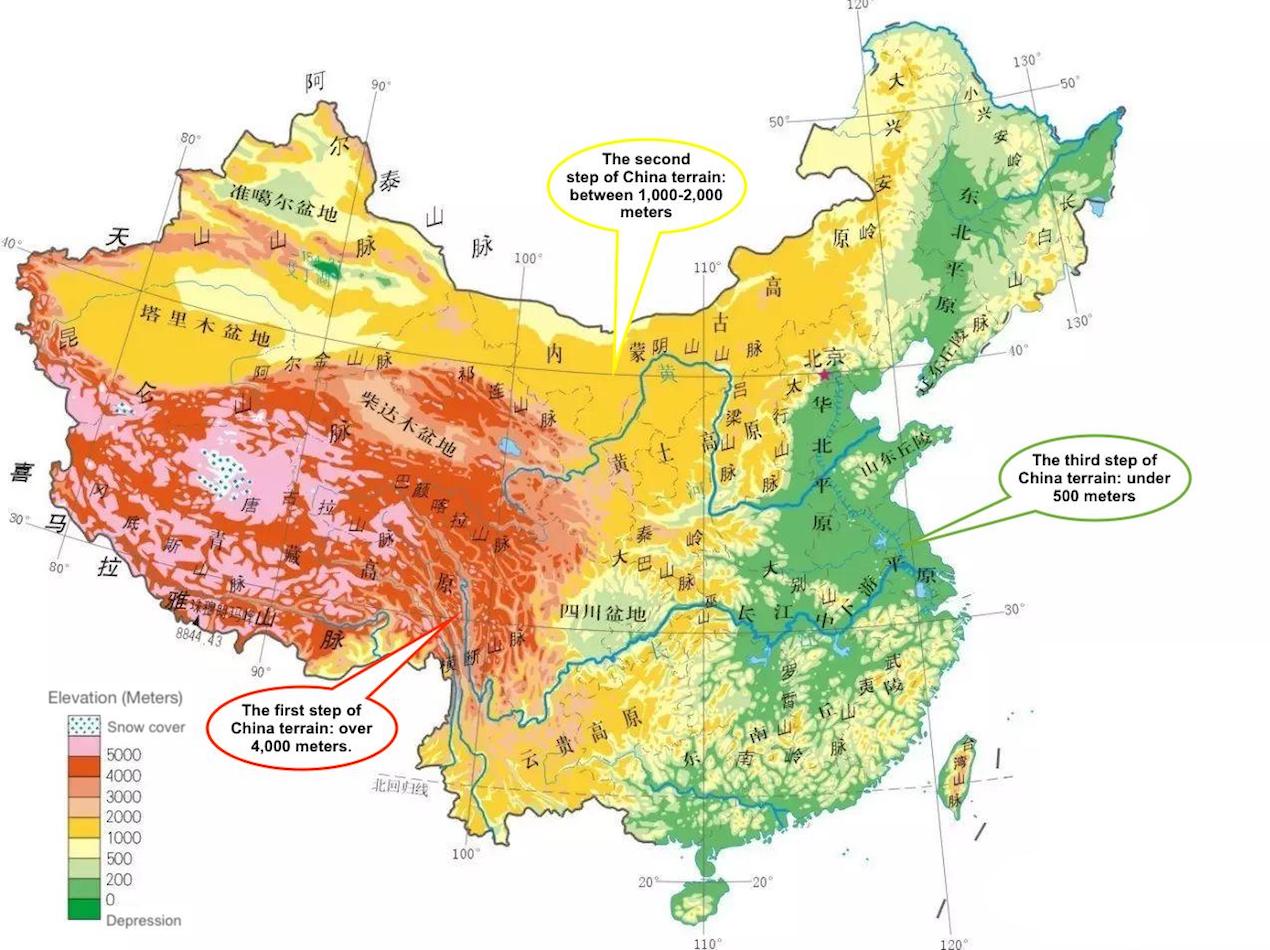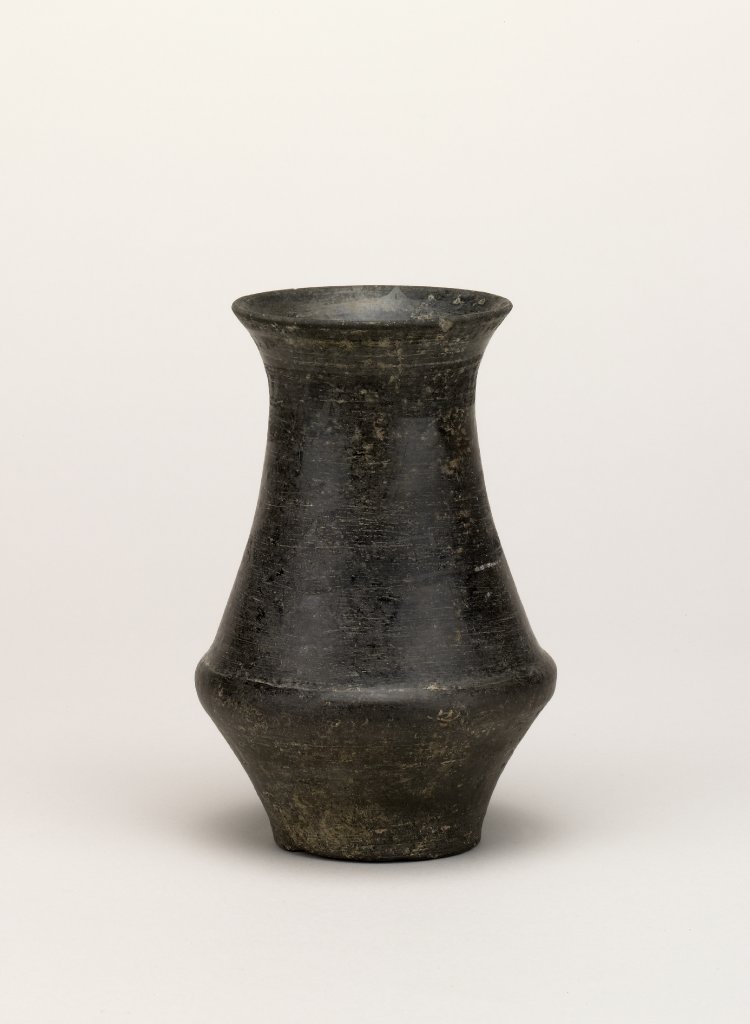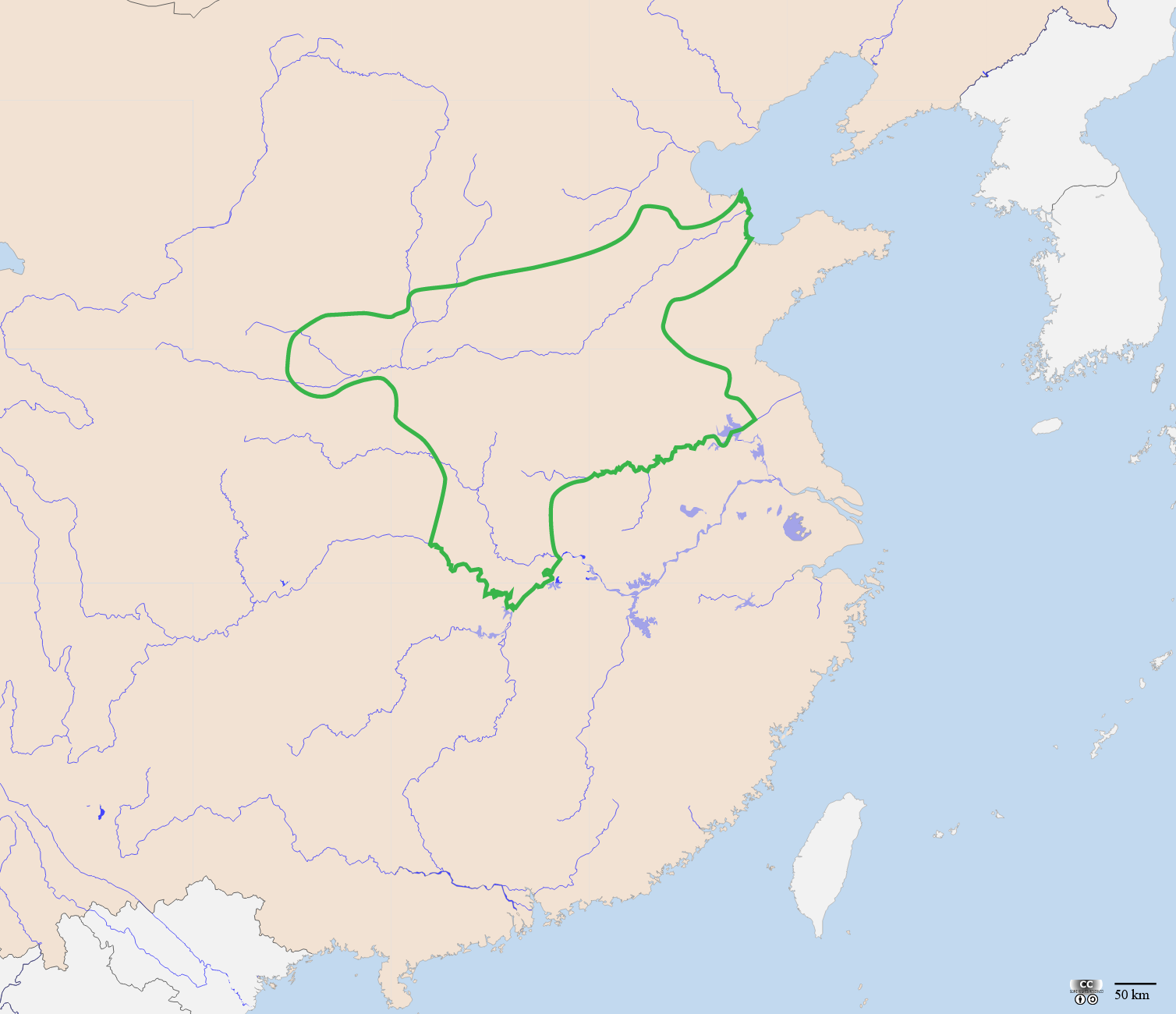This page is about the history of China until the establishment of the People's Republic. For the history of the People's Republic of China specifically, see History of the People's Republic of China.
The history of China dates back to more than 5000 years ago. China, like all state societies, went through the slavery, feudal and capitalist modes of production until the establishment of the People's Republic in 1949.
Geography of China

According to Dr. Ken Hammond of the New Mexico State University, to understand how China materially developed throughout its history, it's important to understand the geography of the country.[1]
The North China plain, at the mouth of the Yellow river, is to this day the agricultural heartland of China thanks to its low and flat terrain as well as the irrigation it receives from the Yellow river, and this plain is where Chinese civilisation first emerged.
Conversely, the South China plain is a region of hills and valleys, mostly south of the Yangtze river. Settlements in the south are divided off one another by these mountains, and river valleys tend to be where permanent settlements developed.
Rivers
The Yellow river has shaped China for millennia. It finds its source on the Tibetan Plateau, and snakes around Northern China until it empties into the Yellow sea, in the province of Shandong.
While the Yellow river has historically represented a challenge to China as it was prone to flooding, these floods brought with them fertile soil and irrigation to crops, and the river has always been primordial to the development of Chinese civilisation.
The Yangtze river further in the south has also been very important to Chinese civilisation historically, but less so than the Yellow river. It was still historically prone to flooding and consequently played a huge part in agriculture and sustaining life around it.
Prehistoric and early historic period
Early societies

According to Dr. Ken Hammond, the population of China itself has evolved in complex ways.[1] The earliest people to call themselves Chinese, which means "people of the black hair", lived in the North China plain. The earliest societies to emerge from this area were confederations of numerous tribal groups who defined themselves in contrast to those who were not Chinese, i.e. people who were not civilised. A number of terms exist in Chinese to define these people that are best translated to as "barbarians" in English (barbarians being what the Ancient Greeks similarly called any people who were not Greek).
Excavated pottery remains suggest that a single culture came to dominate the whole of the North China plain some 4000 to 6000 years ago. Characteristic pottery was discovered as originating from Dragon Mountain (Longshan), and later showed up in other archeological sites.
Writing
One key element that made this first Chinese society define themselves as civilised (as opposed to what they defined as their barbarian neighbours) was a system of writing, which their neighbours did not possess. There is not much transitional evidence to the emergence of writing in China. That is to say, archeological evidence shows that once writing appears in China, it showed up as a fairly fully developed system, suggesting that writing appeared fairly quickly.
Mass migration
As Chinese civilisation expanded, neighbouring peoples, particularly in the South, were either displaced or assimilated. The Vietnamese and Thai people, for example, formerly lived in southern China and were displaced as part of this expansion to the South.
Some of these populations were forced further west, on higher elevation, and have remained there since then. Today, they are generally called hill tribe communities, and many of these groups retain distinctive identities in China: they retain their own language, their own cultural practice, and their own religion. Today, they constitute around 5% of the population of China. There are 54 such officially recognized ethnic minorities in China
This process happened around 2500 to 2000 years ago.
The first dynasties
The emergence of bronze was critical to China's future development. Bronze gave rise to an industry of mining, smelting, and shaping the metal into tools, weapons, jewellery, etc. which created culture in the various populations that inhabited what is now China. This transition from the neolithic to the bronze age also marked the transition from prehistory to history.
The Xia dynasty
According to Dr. Hammond, traditional Chinese historiography considers the Xia to be the first dynasty in Chinese history.[2] Dr. Hammond notes however that "the Xia itself is actually sort of a transitional period". The Xia did not leave any written records, and as such the Xia period is understood in archeology to be the clear, sharp "demarcation that indicates the emergence of a very different political entity [from what existed before]", the Xia.
The Xia period began roughly around 2200 BCE. The Xia built palace architecture, large structures built on rammed earth platforms (compressed and firm layers of dirt), a method that would keep being used in China for the coming millennia. The Xia also saw the emergence of class society; as agriculture and pottery was creating a surplus of food, fewer farmers were needed, and a class of "non-farmers" (artisans, warriors, spiritual leaders and bureaucrats) emerged, forming the basis of Chinese class society.
Dr. Hammond theorizes that this emergent class of leaders solidified their power by performing rituals for the populace. The Xia's ancestors performed totemism, a practice in which animal spirits are associated with particular tribal or clan families. In the Xia dynasty, the worship of totems of one particular family was transformed into a royal ancestral cult. In other words, not only the spirits of animals, but the spirits of the ancestors of the present day rulers came to be seen as divine powers. This further solidified the power of the royal family and laid the foundation for monarchy in Chinese society.
The Xia civilisation ultimately did not leave many details as to their way of life, and most of their records came from the subsequent Shang dynasty, who shared many consistent features with the Xia.
The Shang dynasty
The Shang dynasty, named after the royal family, begins around 1500 BCE. Dr. Hammond notes that traditional Chinese historiography uses a very elaborate and precise chronology which would place the Shang dynasty at 1766 BC, but that modern archeological investigations cannot confirm this date, and so the actual date of their foundation remains vague.
Oracle bones divination
The Shang dynasty has left many written records about their life, as they performed oracle bone divination. In this practice, people would ask a question to the royal family's ancestors on either oxen shoulder blade bone or the underside (inside) of turtle shells. The question would be carved on the bone by a diviner, the class of people who could read and write. The bone would then be poked by a sharp, hot object during daily ceremonies, which caused it to crack. The way the bone cracked was then interpreted as an answer by the ancestors to the question carved into the bone. The Shang took their written records even further and kept records on the results of the divination. This means they kept record of not only the questions, but also the answers and actual outcome of the divinations.
Oracle bone divination was so commonplace in the Shang period that to this day, tens of thousands of bones have been dug up.
Dr. Hammond notes that these divination rituals were important to maintain the power of the dynasty and diviners, but the bronze culture was also equally important. Bronze cutlery (such as wine cups, plates or pans) were used to present offerings to the ruler's ancestors. After these offerings and sacrifices, which took place in great halls, the king would offer the "physical remains" (the offerings that had not been consumed by the ancestors) to the populace in great feasts, as a way to remind the people of his wealth and power.
Succession of power
It is also in the Shang period that the premises of the Mandate of Heaven appeared. At the time, life expectancy was not very long -- one could hope to live up to 30. It was thus very common that the Shang king would die before his oldest son was old enough to succeed him. Because of this, the kingship passed from oldest to youngest brother. Then the eldest son of the eldest king would take over, and the process would repeat. 26 kings were recorded during the Shang period. which lasted for around 500 years (an average of one king every twenty years).
The Shang also built royal capitals, which was a continuation of the Xia palace architecture on rammed earth structures. However, they didn't seem to stay in them a very long time: they had nine capitals during their 500 years rule.

Shang state
The Shang state was a federation of people. In other words, there was the Shang ruling family, their blood relations, and then people who were not blood relations to that family but were part of the Shang state. The Shang dynasty spread relatively far, and the federated people that were part of this state played a primordial role in its upkeep and border security. As such, due to the size of the Shang empire, reports, letters, communication from the king to his subordinates would be sent in writing, which characterises the Shang as a literate state.
The Shang state was quite elaborate and practised division of labour from early on. Bronze objects, for example, were made with casts in which molten bronze was poured in. Their bronze industry -- mining the metal, smelting, refining, blending the metals together, the design of the objects, etc. was all organised by the Shang state and required different labourers and artisans for each step of the process. That involved the organisation of a consequent number of people as well as running activities at a number of sites (the mines, for example, were not located in the same place as the furnaces).
This elaborate, organised system of production required that the Shang state had a capacity to sustain its people, e.g. feeding them, clothing them, housing them, etc. This is how archeologists know that the Shang also had an elaborate taxation system, which also appeared on oracle bones. Tributes were paid by subordinates who were part of this federation to the Shang royal family and formed the basis of taxation revenue. Furthermore, the organisation of the mining industry further established the authority of the royal family and their kin.
The Shang practiced slavery, which was the first major mode of production in the world and allowed them to sustain this elaborate society and state. Slaves, as was usual in the earliest incarnation of the institution, were usually prisoners of war and criminals.
Decline of the Shang period
The people not under Shang authority were a constant concern and often came up in oracle bones. Since the Shang recorded every outcome of oracle bone divination, these records show that there were frequent devastating raids from outside populations. Notably, people were recorded as being taken away as slaves during these raids.
Security was a critical function of the Shang state but eventually found itself in a contradiction. The Shang dynasty needed to deploy and maintain soldiers in the border regions, where the tributary non-Shang people lived, so that they could receive their tribute and not have it stolen during raids. Over time, this created resentment from these populations, especially when security started breaking down and raids became more frequent.
This unrest eventually boiled over to rebellion, when the tributary peoples to the Shang overthrew the dynasty and established the Zhou dynasty as their successors.